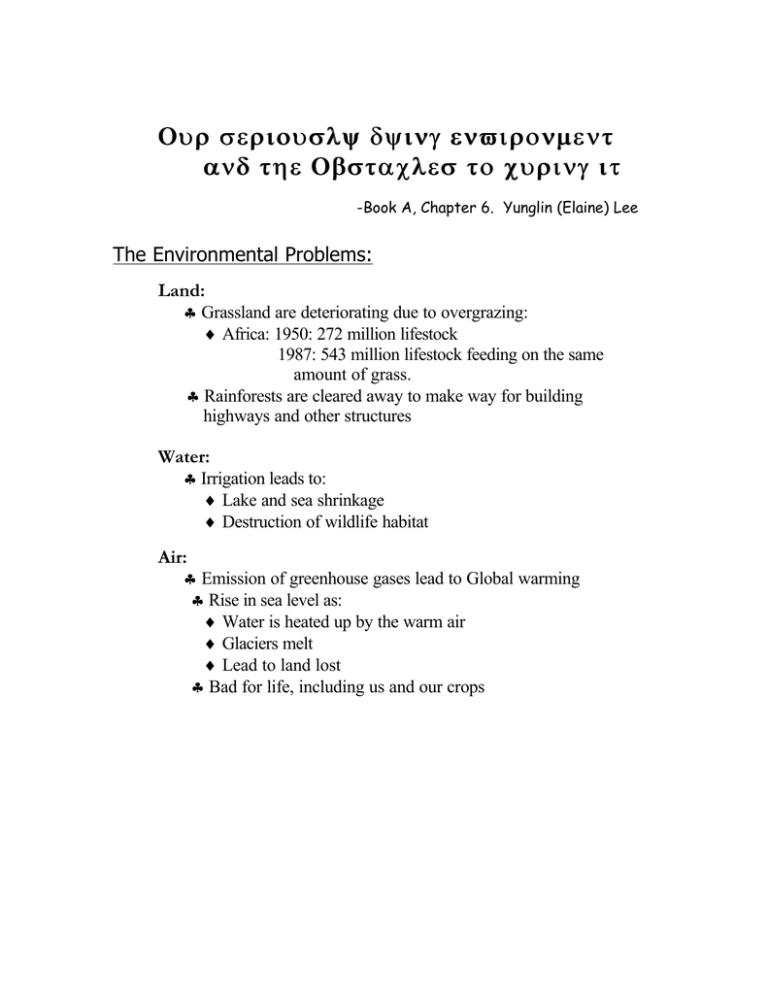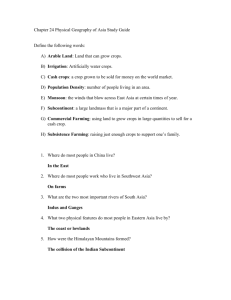Ουρ σεριουσλψ δψινγ ενϖιρονµεντ ανδ τηε Οβσταχλεσ το χυρινγ ιτ
advertisement

Ουρ σεριουσλψ δψινγ ενϖιρονµεντ ανδ τηε Οβσταχλεσ το χυρινγ ιτ -Book A, Chapter 6. Yunglin (Elaine) Lee The Environmental Problems: Land: ♣ Grassland are deteriorating due to overgrazing: ♦ Africa: 1950: 272 million lifestock 1987: 543 million lifestock feeding on the same amount of grass. ♣ Rainforests are cleared away to make way for building highways and other structures Water: ♣ Irrigation leads to: ♦ Lake and sea shrinkage ♦ Destruction of wildlife habitat Air: ♣ Emission of greenhouse gases lead to Global warming ♣ Rise in sea level as: ♦ Water is heated up by the warm air ♦ Glaciers melt ♦ Lead to land lost ♣ Bad for life, including us and our crops Possible solutions: Adaptation: we can use ♣ Newly engineered crops, which produce greater yield with less water ♣ Employ better irrigation systems ♣ Use of environment-friendly energy sources, such as electrical energy Cooperation: ♣ All nations combine effort by controlling their own pollution, deforestation, and all other environmentally destructive activities. Obstacles: Money, money, money: ♣ Developing countries are striving to catch up to the developed nations, and industrialization is the only way for them to achieve their goal. ♣ New technology requires money. The developing countries cannot afford to use their already insufficient income on getting the environmentally-friendly technology. Politics: ♣ We cannot suddenly enforce a totally different way of life for people ♦ We cannot move the African herdsmen to Maryland where the temperature is temperate or take away all their cattle. ♦ We cannot tell Americans not to drive anymore but to take the crowded subway everywhere they go. ♣ Concerned countries have no right to force other countries to stop industrialization. ♦ Note: U.S. is #1 in greenhouse gas production in 1987. ♠ The abstractness of the future: It is impossible to expect people to give up their luxury so their great great grandchildren can have a chance to live.




